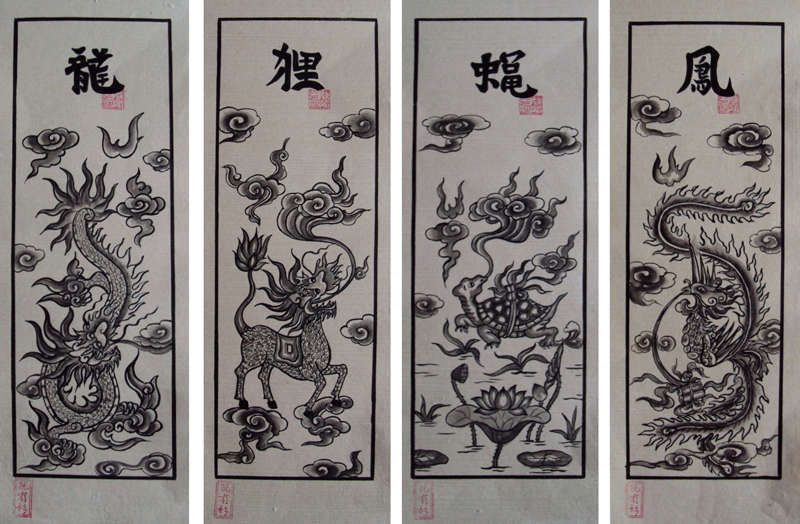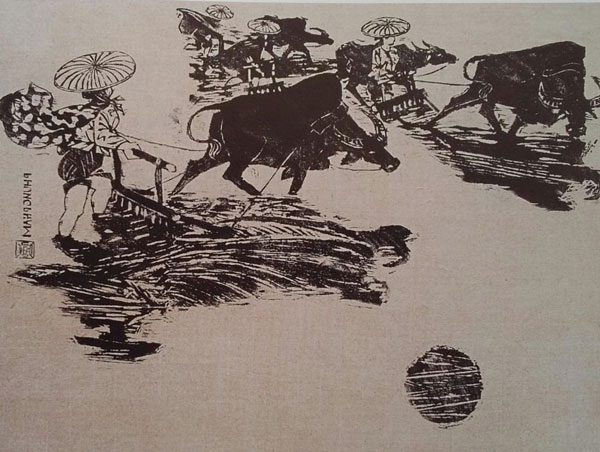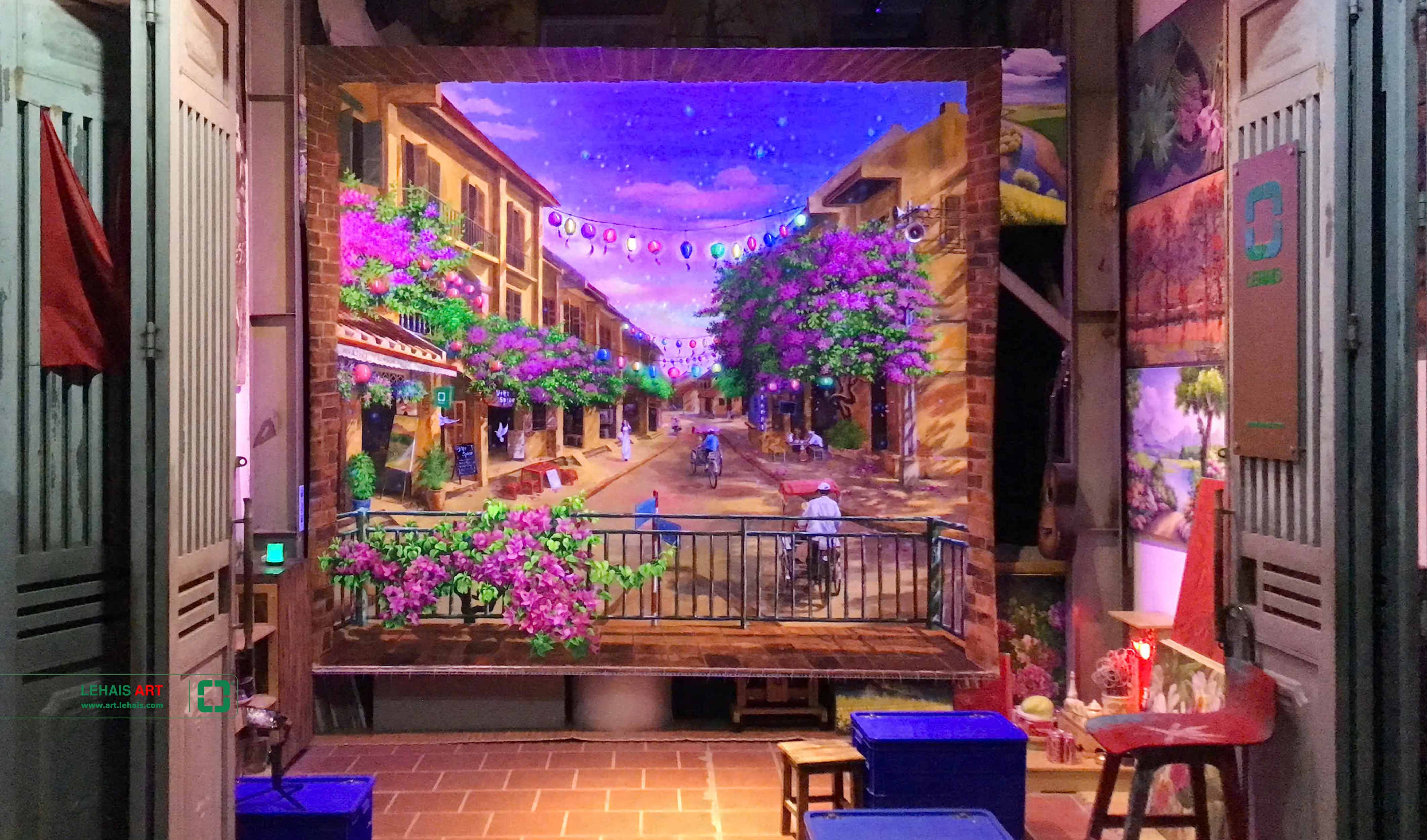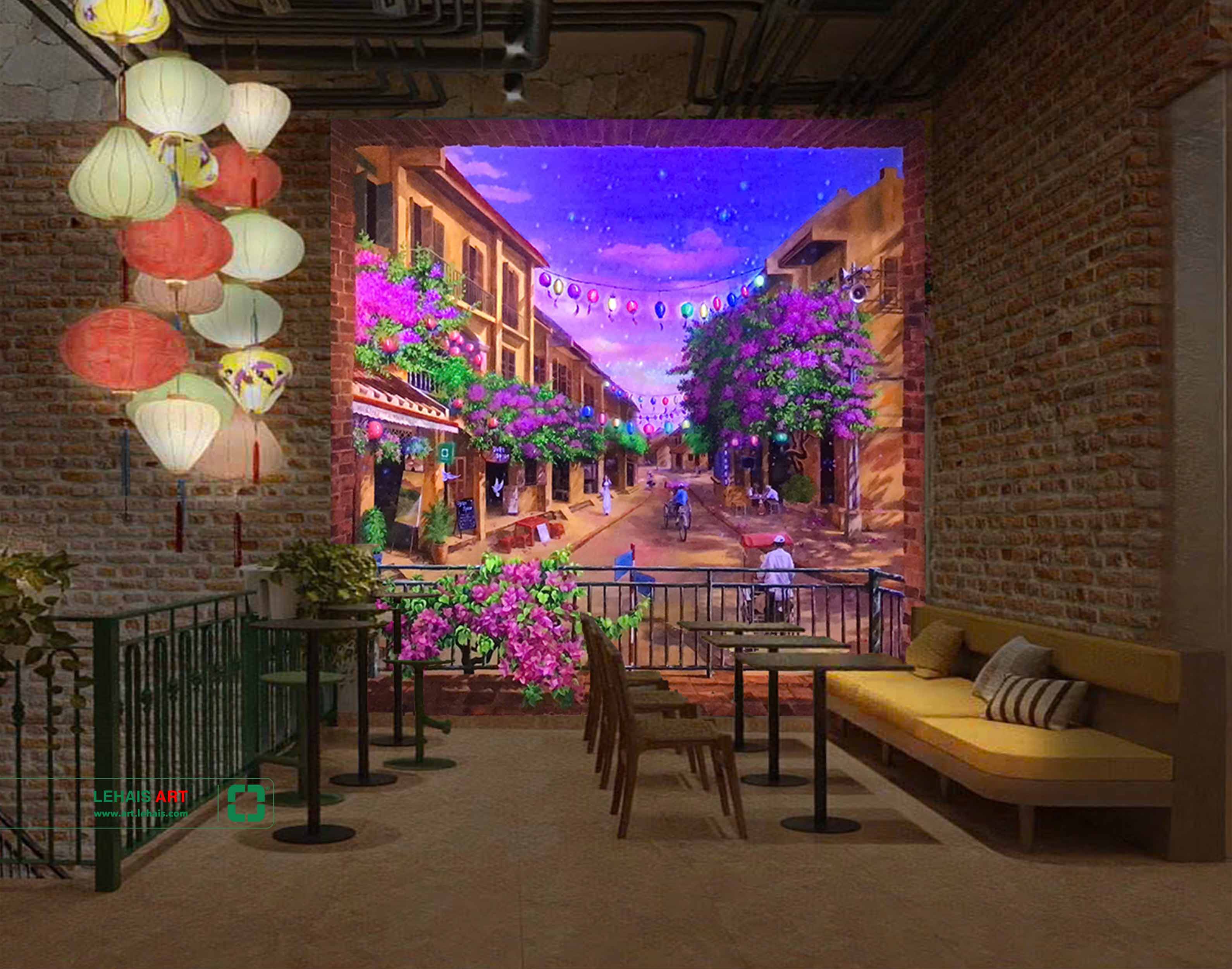Origin and date of Vietnamese woodblock paintings
Vietnamese woodblock prints have an ancient origin. History books have said that in the Ly Dynasty (1009-1225), our people had a profession of carving boards to print Buddhist scriptures, it is possible that people also engrave the accompanying illustrations on the boards too... In 1396, Ho Quy Ly gave a release. How to use the Bao Hoi paper money, but definitely use wooden planks to engrave and print both letters and decorations (unfortunately, we can't know the image of this kind of paper today). The invasion of the Ming invaders (1407-1427) devastated our country, some professions were destroyed, then our people had to find a way to learn again.
In the middle of the 15th century, during the early Le Dynasty, flower detective Luong Nhu Hoc (from Hai Duong) went to China as a missionary, learned the craft of engraving and printing on wooden boards, and then returned to teach the people of his hometown of two villages, Hong Luc - Lieu Chang. Today, people still worship him as the Patriarch of the woodblock printing profession. In the sixteenth, seventeenth, eighteenth centuries, when Vietnamese folk art reached its peak, folk woodblock prints were born such as Dong Ho, Hang Trong, Kim Hoang... Although no evidence has been found yet. However, most researchers believe that the Dong Ho painting line may have been born the earliest, around the 16th - 17th centuries, under the Mac or Le - Trinh dynasties.
After that, two lines of paintings, Hang Trong and Kim Hoang, were likely born around the 18th century. In Hue, there is a line of Sinh village paintings, which is estimated to have been born around the beginning of the 19th century. The line of engraving paintings in the South of Vietnam was probably born later, around the end of the 19th century. The least researched is the line of Paintings worshiping the mountains of Viet Bac of the priests of the Dao, Tay, Nung, Cao Lan, Giay, San Diu... must appear at the latest in the Le-Trinh dynasty (17th - 18th centuries). Although not considered a line of folk paintings, the type of engraving called Ten objects in the warehouses of Vietnamese pagodas is also very attractive, likely dating from the Le-Trinh dynasty (17th-18th centuries).
The Indochina Fine Arts School was established in 1925 marking an important milestone: the transformation from folk woodcarving to modern Vietnamese woodcarving. Different from the past, since then woodblock prints began to be authored with Western influences such as composition, graphics, plastic anatomy, near and far laws, and engravings that express emotions through each touch as well as other forms of art. colors and ink are imported. The consumption of modern woodcut paintings is also far different: not sold at Tet markets or for worship anymore, but to meet the needs of painting in modern society through galleries and exhibitions.
Modern woodcarvings began to be framed and hung on the walls from private living rooms to luxurious offices.











